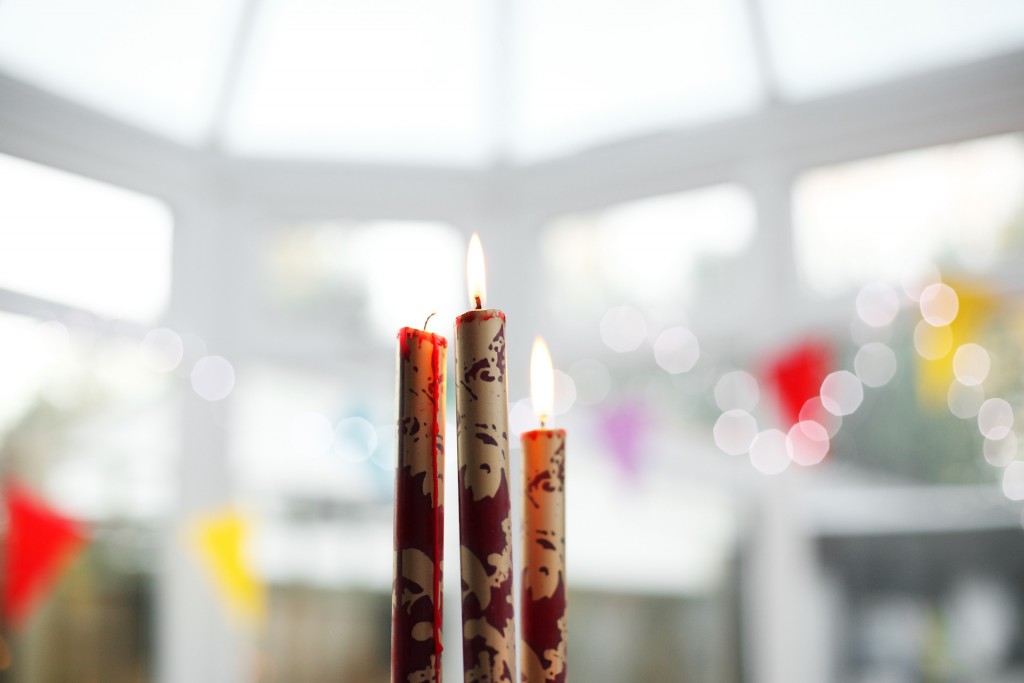Today’s post is written by regular contributor Debra Eve.
Literature abounds with the quirky things writers do to entice the muse.
Victor Hugo wrote in the nude so he wouldn’t leave the house.
Philip Pullman writes only in ballpoint pen on lined A4 paper with two holes in it.
Maya Angelou checks into a hotel with a legal pad, a Bible, playing cards, Roget’s Thesaurus, and a bottle of sherry. After she drafts 12 pages longhand, she checks out.
Steven Pressfield recites the Invocation to the Muse from Homer’s Odyssey and writes on his computer until he starts making too many typos. Then copies his work to disk and stores it in his truck in case the house catches fire.
Victor Hugo and Philip Pullman have writing habits, but Maya Angelou and Steven Pressfield engage in writing rituals. The difference is immense.
If you’re having trouble putting the seat of your pants to the seat of the chair, a writing ritual might hold the answer.
What is Ritual?
At its simplest, ritual is set of actions designed to focus attention and heighten an experience. Anthropologists Arnold van Gennep and Victor Turner observed that ritual has three phases:
- Separation from everyday activities.
- Transition to an unstructured or “liminal” reality, where the participant becomes a walker between the worlds, a traveler at the threshold. (The word “liminal” comes from the Latin limen, meaning “threshold.”) Writing is the ultimate liminal reality.
- Reassimilation into normal life, but more deeply than before.
So a complete writing ritual aptly includes bookends—a distinct separation from the mundane and a deeper return to it.
How to Create a Writing Ritual
1. Separate from the Mundane. Recently, I polled a group of writers about their rituals. Most intuitively realized the need to separate writing time from everyday tasks.
Jessica Morrell makes a cup of tea and records her dreams. After, she invokes the muse through reading or writing poetry. “By then,” she says, “I feel as if I’ve dipped into a river of words and metaphor where I remain all morning.”
Erika Liodice takes “inspiration field trips” and writes in a new place each day: the book store, the coffee shop, at a picnic table by the river. She says, “Changing up my surroundings has played such a big role in idea development that I might never return to my desk.”
Tina Williams lights a special candle in a “very fancy candle holder.” She found it in a dusty corner of an old junk shop. “I just knew the two of us would be close friends,” she says. “We have agreed that when lit, he opens the portals between worlds and allow my daydreams to come through. What he does after I’m done is none of my business.”
Other ways to separate from the mundane include meditating, saying a prayer, playing evocative music, or setting an intention for the time.
2. Enter Liminal Reality. Remove all distractions and write. Social media does not belong in ritual space!
Jo Eberhardt also recommends keeping a log to focus this stage. “Track word count, or pages written, or whatever progress you’ve made on your creative project. Being able to look back at a diary and see written proof of your success is an amazing motivator.”
3. Reembrace Your Life. Deliberately close your writing time. Steven Pressfield backs up his work and puts it in his truck. Maya Angelou checks out of her hotel. J.D. Moyer jots down ideas for the next day’s session and says a prayer of thanks (even though he’s an atheist).
This three-phase structure explains why writing in cafes works so well. We automatically bracket our writing time by entering and exiting the space.
With repetition, our brains will create new connections in response to this ritual structure. How much repetition? It varies by individual. But once the links form, you’ll become immersed in your writing much more quickly.
One Writer’s Experience
Jo Eberhardt discovered this method recently. She starts her nightly writing ritual by reading her son a bedtime story and tucking him in. At 7:30 pm, she joins her husband in their office, where she writes while he draws.
Exactly one hour later, she finishes the word she’s typing (not the sentence or the paragraph) and saves her work. Then she and her husband discuss how the creative time went for them. “For one hour,” she says, “we are artists first.”
After, they look in on the children and go about the evening’s tasks, like checking Facebook or washing the dishes. “But the world looks different; brighter. Our conversation is more lively. We smile more readily.”
Jo concludes, “It took about a week to train my subconscious into being ready to go on cue, but now (10 months later) it just happens.” She averages 900 words a night.
Obviously, anthropologists and brain scientists don’t have the final say on what works for individual writers. They don’t even know why we love the “rule of three” you’ve studied in a dozen writing books.
But you might find, like Jo, that approaching your writing time as a three-phase ritual will create a more focused, productive experience.
Do you have a writing ritual?
